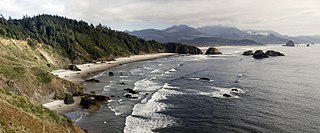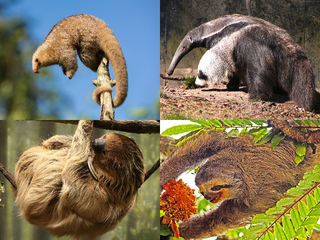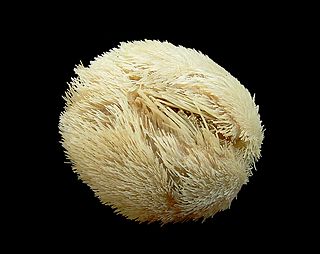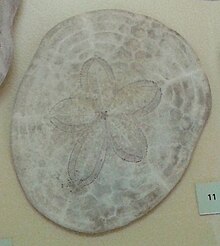
The gray whale, also known as the grey whale, is a baleen whale that migrates between feeding and breeding grounds yearly. It reaches a length of 14.9 meters (49 ft), a weight of up to 41 tonnes (90,000 lb) and lives between 55 and 70 years, although one female was estimated to be 75–80 years of age. The common name of the whale comes from the gray patches and white mottling on its dark skin. Gray whales were once called devil fish because of their fighting behavior when hunted. The gray whale is the sole living species in the genus Eschrichtius. It is the sole living genus in the family Eschrichtiidae, however some recent studies classify it as a member of the family Balaenopteridae. This mammal is descended from filter-feeding whales that appeared during the Neogene.

The Boidae, commonly known as boas or boids, are a family of nonvenomous snakes primarily found in the Americas, as well as Africa, Europe, Asia, and some Pacific islands. Boas include some of the world's largest snakes, with the green anaconda of South America being the heaviest and second-longest snake known; in general, adults are medium to large in size, with females usually larger than the males. Six subfamilies comprising 15 genera and 54 species are currently recognized.

Monterey Bay is a bay of the Pacific Ocean located on the coast of the U.S. state of California, south of the San Francisco Bay Area. San Francisco itself is further north along the coast, by about 75 miles, accessible via CA 1 and US 101.

Sand dollars are species of flat, burrowing sea urchins belonging to the order Clypeasteroida. Some species within the order, not quite as flat, are known as sea biscuits. Sand dollars can also be called "sand cakes" or "cake urchins".

The Oregon Coast is a coastal region of the U.S. state of Oregon. It is bordered by the Pacific Ocean to its west and the Oregon Coast Range to the east, and stretches approximately 362 miles (583 km) from the California state border in the south to the Columbia River in the north. The region is not a specific geological, environmental, or political entity, and includes the Columbia River Estuary.

The common ground dove is a small bird that inhabits the southern United States, parts of Central America, the Caribbean and northern South America. It is considered to be the smallest dove that inhabits the United States. As its name suggests, the bird spends the majority of its time on the ground walking but still has the ability to fly.

The order Pilosa is a clade of xenarthran placental mammals, native to the Americas. It includes anteaters and sloths. The name comes from the Latin word for "hairy".

Echinocardium is a genus of sea urchins of the family Loveniidae, known as heart urchins. The name is derived from the Greek ἐχῖνος and καρδία.

The grey-headed tanager is a widely distributed species of small Neotropical bird in the tanager family Thraupidae. It is the only member of the genus Eucometis.

The Tonnoidea are a superfamily of sea snails, marine gastropod molluscs in the order Littorinimorpha. This superfamily includes many very large species.

Enaeta is a genus of sea snails, marine gastropod mollusks in the family Volutidae.

Echinocardium cordatum, also known as the common heart urchin or the sea potato, is a sea urchin in the family Loveniidae. It is found in sub-tidal regions in temperate seas throughout the world. It lives buried in the sandy sea floor.

Clypeaster, common name "cake urchins" or "sea biscuits", is a genus of echinoderms belonging to the family Clypeasteridae.

Clypeaster australasiae, the Australasian sand dollar, is a species of sea urchins of the family Clypeasteridae. Their armour is covered with spines. Clypeaster australasiae was first scientifically described in 1851 by Gray.

Palorus subdepressus, the depressed flour beetle, is a species of darkling beetle in the family Tenebrionidae. It is found in Europe and North America.

Clypeaster reticulatus, the reticulated sea biscuit, is a species of sea urchin in the family Clypeasteridae. This species was first scientifically described in 1758 by Carl Linnaeus. It lives on the sandy seabed of shallow seas, semi-immersed in the sediment.

Clypeaster rosaceus, the fat sea biscuit, is a species of sea urchin in the family Clypeasteridae. It occurs in shallow water in the western Atlantic Ocean and was first scientifically described in 1758 by Carl Linnaeus.

Clypeaster humilis is a species of sea urchin in the family Clypeasteridae. This species was first scientifically described in 1778 by the German biologist Nathanael Gottfried Leske. It occurs in the tropical Indo-Pacific region.

Clypeaster japonicus, the Japanese sea biscuit, is a species of sea urchin in the family Clypeasteridae. This species was first scientifically described in 1885 by the German zoologist Ludwig Heinrich Philipp Döderlein.

















